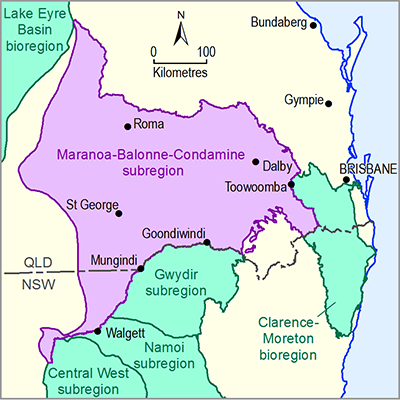As surface water modelling was not undertaken, the assessment of ecological and ecosystem impacts was limited to an overlay analysis, a summary of the hydrological changes and a conceptual understanding of the ecosystems, using landscape classes. While this is valuable, receptor impact models, used to understand the potential impacts of hydrological changes on an ecosystem or landscape, would provide better indicators of potential changes in ecosystems. These models use indicators in the ecosystem, such as the condition of the breeding habitat for a given species, or canopy cover of river red gums, to assess the potential impact of hydrological changes.
Ecological knowledge about the nature of a species’ or community’s water dependency is not available in all cases. This Assessment has relied on review of habitat requirements for each species and the presence of floodplain and wetland areas and shallow groundwater within its spatial extent. For assets that do not have geographic location information, such as cultural values identified through consultation with Traditional Owners, resources such as the Atlas of living Australia (ALA, 2017) could be used to identify the spatial occurrence of animals and plants associated with these cultural values in a future Assessment.

Product Finalisation date
- 3.1 Overview
- 3.2 Methods
- 3.3 Potential hydrological changes
- 3.4 Impacts on and risks to landscape classes
- 3.4.1 Overview
- 3.4.2 Landscape classes that are unlikely to be impacted
- 3.4.3 'Floodplain or lowland riverine (including non-GAB GDEs)' landscape group
- 3.4.4 'GAB GDEs (riverine, springs, floodplain or non-floodplain)' landscape group
- 3.4.5 'Non-floodplain or upland riverine (including non-GAB GDEs)' landscape group
- 3.4.6 'Human-modified' landscape group
- References
- Datasets
- 3.5 Impacts on and risks to water-dependent assets
- 3.6 Commentary for coal resource developments that are not modelled
- 3.7 Conclusion
- Citation
- Acknowledgements
- Contributors to the Technical Programme
- About this technical product
